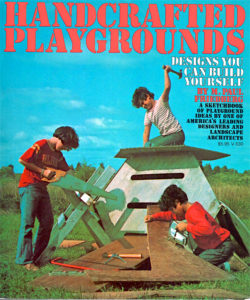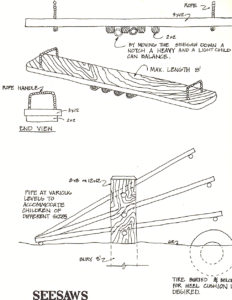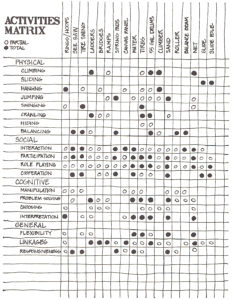“Awake, arise or be for ever fall’n.”
-John Milton, “Paradise Lost”
Playgrounds. A child’s paradise. Looking back across many decades, playgrounds have a prominent history in classical physical education and in outdoor recreation. While the history and social psychology of public playgrounds for children are quite complex and sophisticated, playgrounds have, and can be, quite simple.
Why bother with playgrounds in 2021? In the era of COVID-19 restrictions, 2020 saw another dismantling of physical education classes and many outdoor recreation opportunities for children were removed…and continue into 2021 at the time of this post publishing. Many parents and adults have resorted to creating their own physical education and playgrounds at home. As we move forward into 2021, I predict even more loss of school PE and school playground opportunities…best we get to it on our own now because play, playgrounds, and physical fitness are ESSENTIAL for children.
What does it take to create a “paradise lost” to smartphones and Zoom sessions? Not much. You’d be amazed at how much entertainment, wonderment, and fun can be had even with a simple hill to play on. To engage a modern child in outdoor and “analog play,” you might wish to consider removing the “smart” phone (but can they read a tape measure and use a hammer?) and video games…then the child can start to look around at the world and environment to create new opportunities–or in the vintage sense of play–to engage in a previous paradise of kinesthetic exploration that helped to develop millions of children of past generations.
“Handcrafted Playgrounds is a sketchbook of designs based on two very simple premises: Anyone can build a playground, and the actual process of building it can be as important as the finished product.”
-M. Paul Friedberg, Landscape Architect
Beyond a pile of dirt or a hill for play, you can take some basic building skills and tools to create your own backyard playground paradise. You’ll need a little yard space, some hand tools and materials like wood, rope, and/or pipe, and a few power tools too like a skill saw, drill, etc. Let’s get started.
As usual, I always look back to move forward with better confidence and historic wisdom. A great reference for how to build your own playground equipment is “Handcrafted Playgrounds: Designs You Can Build Yourself” by award-winning landscape architect M. Paul Friedman published in 1975. The book is full of simple plans and ideas along with an introduction to the philosophy behind children’s play and playgrounds. The book is divided into sections based on what type of structure and materials you are interested in using such as: ladders, walls, poles, nets, tubes, tires, slides, swings, see-saws, and so much more. There are also a few plans for planter boxes, bike racks, and benches too.
Many of my vintage PE and outdoor recreation references have sections in them for building your own playground and fitness equipment. In the era of COVID-19 and lockdowns, we have seen a return to “DIY” fitness equipment and also a return to teaching PE at home in your own backyard. Even a simple straight pull-up bar made from pipe and two wooden posts can be quite the backyard attraction! While it can be challenging to teach a full PE curriculum based on all of your state PE standards, you’d be pleasantly surprised at how much a child can learn about the complexities of human movement in areas of gross motor skills, balance, agility, coordination, strength, flexibility, and cognitive decision making just from playing on proper playground equipment–even simple gear made at home. Also, if the children are involved in the actual process of making the equipment with their responsible adults–they learn even more both physically and mentally…the making of outdoor fitness equipment was called “labor engineering” by previous generations and was as essential as the fitness gained from using the outdoor apparatus gear.
A playground paradise lost can be found again…you just have to know that you should be looking and what to look for. “Handcrafted Playgrounds” by Friedman is a great place to begin your journey. 🙂
*All images from “Handcrafted Playgrounds: Designs You Can Build Yourself” by M. Paul Friedberg (1975)
Resources:
- “Handcrafted Playgrounds” by M. Paul Friedberg (1975)
- “Play and Interplay: A Manifesto for New Design in Urban Recreational Environment” by M. Paul Friedberg (1970)
- “M. Paul Friedberg’s Journey of Ideas” (American Society of Landscape Architects)
- “M. Paul Friedberg Biography: Becoming a Landscape Architect” (The Cultural Landscape Foundation)
- “Pioneer M. Paul Friedberg” (The Cultural Landscape Foundation)
- Diana Mara Henry: Children at Play Photo Collection (Tire Rope)
–Ron Jones, MS, Historical Kinesiologist, Physical & Health Educator


